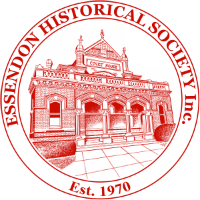An aerial view of Moonee Ponds, including the Moonee Ponds Junction, Pascoe Vale Road, Moonee Valley Racecourse, Queens Park, Mount Alexander Road, the Moonee Ponds Courthouse, St Thomas, the Essendon Town Hall (c. 1935).
Source: EHS Collection
The Essendon Historical Society has endeavoured to determine why our suburbs have their current names. In some cases, there are alternative explanations but in most cases we list the most likely name source. The Essendon Historical Society welcomes comments on improvements or errors.
Aberfeldie
James Robertson (1819-1895), a pastoralist, built a large residence on his Essendon property c1865, which he called Aberfeldie after the small market town Aberfeldy in Perthshire, Scotland. The homestead was built on the western side of Aberfeldie Street on the corner of Park Street and extended through to Combermere Street. The Aberfeldie Estate was subdivided in 1888.
Read Fine Homes to learn more about James Robertson’s Aberfeldie.
Airport West
Formerly known as Spring Park Estate, then North Essendon, the locality is named because it is immediately west of Essendon Airport.
Ascot Vale
The locality was named after Ascot the famous English racecourse, and its links to the racing industry. It is thought that the first use of Ascot Vale was with the Railway Station which opened on 1 November 1860.
John Thomas Smith, publican, owned several properties in the Parish of Doutta Galla. He purchased a 58 acre Crown Allotment on 30 March 1848 and erected his country residence Ascot in 1855. He moved into his new home in about 1860. The stately home in Bank Street East, Ascot House, was offered for sale on 23 October 1909, as part of the 109 lot Ascot Estate.
Patrick Higgins (1825-1882) purchased 10 acres of land along Maribyrnong and Ascot Vale Roads in 1855, which was part of William Fletcher’s Knoll Estate. The first time his property was up for sale in 1866, it was called Ascot-Vale House. Higgins was a railway contractor involved in the Essendon Railway line.
The Ascot Vale Housing Estate was built on the site previously occupied by the Ascot Racecourse. The Racecourse operated from 1893 until 1942 when it was requisitioned for military purposes before being compulsorily acquired by the Victorian Government for the Housing Commission in March 1946.
Read Fine Homes to learn more about The Knoll and J. T. Smith’s Ascot and the subsequent Ascot House.
Avondale Heights
Originally known as Braybrook Village, the name is probably derived from Avondale House and Estate, County Wicklow in Ireland. There is also a historic Avondale House in Falkirk, Scotland. The Essendon Historical Society needs to research this further. Avondale Heights Post Office opened on 9 December 1957.
Bagotville
The area between the Showgrounds and the Saltwater River was known as Bagotville, named after Robert Cooper Bagot, the first Secretary of the Victoria Racing Club and early Borough Councillor. His property included Fisher Parade, Leonard Avenue and Watson Terrace. After his death in 1881 the land was subdivided and offered for sale as the Bagotville Estate by Henry Byron Moore in 1882.
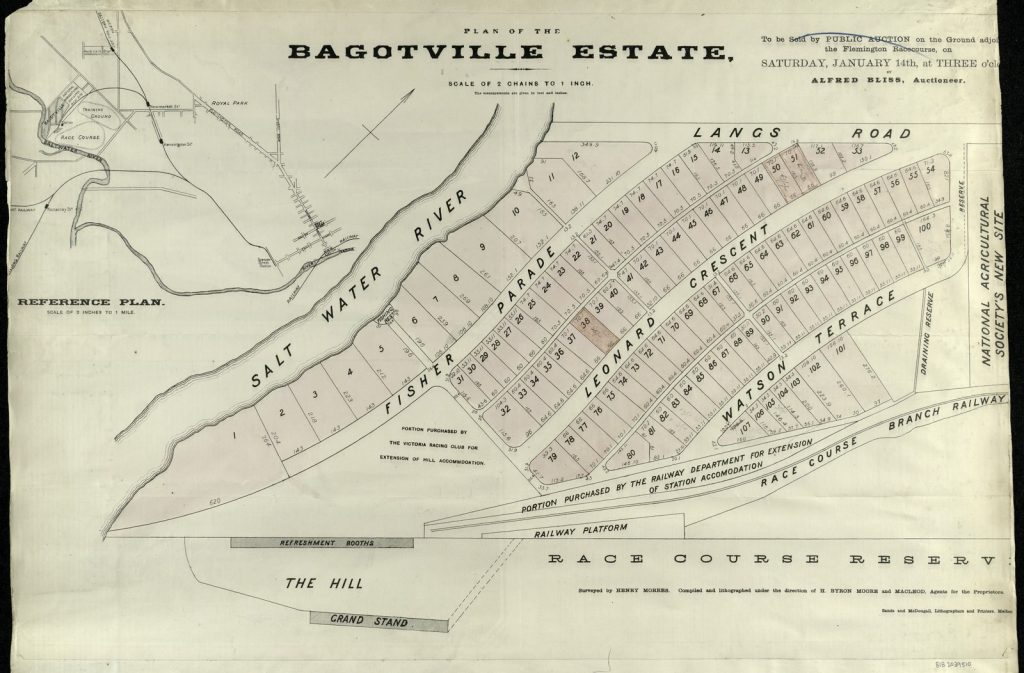
Doutta Galla
The origin of Doutta Galla is uncertain. Robert Hoddle (1794-1881) gave this name to land west of the Moonee Ponds Creek.
Daniel Bruce, a son-in-law of John Batman, claimed that Dutigalla it is a corruption of N’uthergalla, a word used by the local Woiwurung people. Other explanations include:
- The name of the wife of Jika Jika, Batman’s servant. Historians have cast doubt on this.
- The name is that of the indigenous tribe on the original Batman treaty deed signed on the Merri Creek, Northcote. However, there was no group of this name.
- Name made up by Batman
The Parish of Doutta Galla is the area of land between the Maribyrnong River and the Moonee Ponds Creek, extending from the Yarra River in the south to Sharp’s Road, Tullamarine in the north. Today most of the Parish of Doutta Galla is part of the City of Moonee Valley. Notable exceptions are Kensington, Flemington Racecourse and the Showgrounds.
Essendon
Richard Green (1808 -1878), shipping merchant is believed to have named the district after the Essendon village in Hertfordshire, England. The Townships of Essendon and Hawstead were set out following a survey by Eugene Bellairs in the early 1850s and the name Essendon was first used in a newspaper report in December 1852. The Essendon Railway Station opened 1 November 1860.
WWI Renaming Attempt
There was concern during the Great War (1914-18) that the name Essendon may have had Germanic origins, connected with the City of Essen. Before the name was changed, it was determined that there was the Hertfordshire village called Essendon.
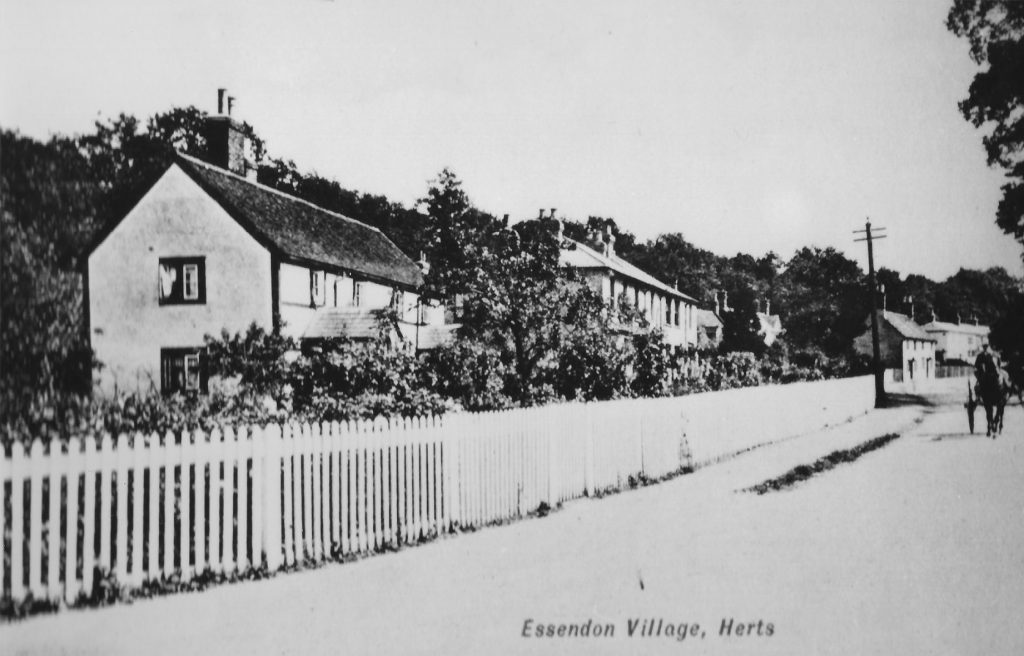
This postcard of Essendon, Hertfordshire, England was gifted to the City of Essendon.
Source: EHS Collection
Essendon Fields
The Aero Club established its base in 1919 at St Johns, North Essendon. On the 11 August 1921 it was gazetted that St. John’s Field had been acquired by the Commonwealth. It was renamed Essendon Aerodrome on 7 August 1923.
In 2001, the long term lease to operate and develop Essendon Airport was acquired by Essendon Airport Pty Ltd and the locality was renamed Essendon Fields.
Flemington
James Watson (1811 -1869), Crown grantee and squatter purchased Crown allotments, bounded by Kent Street in the north and Racecourse Road in the south, extending from Ascot Vale Road to the Moonee Ponds Creek on 20 March 1848. He named his property Flemington after the property in Morayshire Scotland owned by James Rose, the father of his late wife, Elizabeth.
Watson moved into a house in what today is known as Flemington Street. On his property he built a hotel, several small shops and a blacksmith’s shop. James Dunbar became the first licensee of the Flemington Hotel which was open for business in April 1848
On 30 October 1849 wealthy pastoralist, Hugh Glass (1816-1871) purchased the Flemington Estate. In 1856 Hugh Glass called tenders for the erection of a large two storey residence Flemington House. In 1899 the mansion and property were purchased by Henry Madden. This resulted in the house and area becoming Travancore.
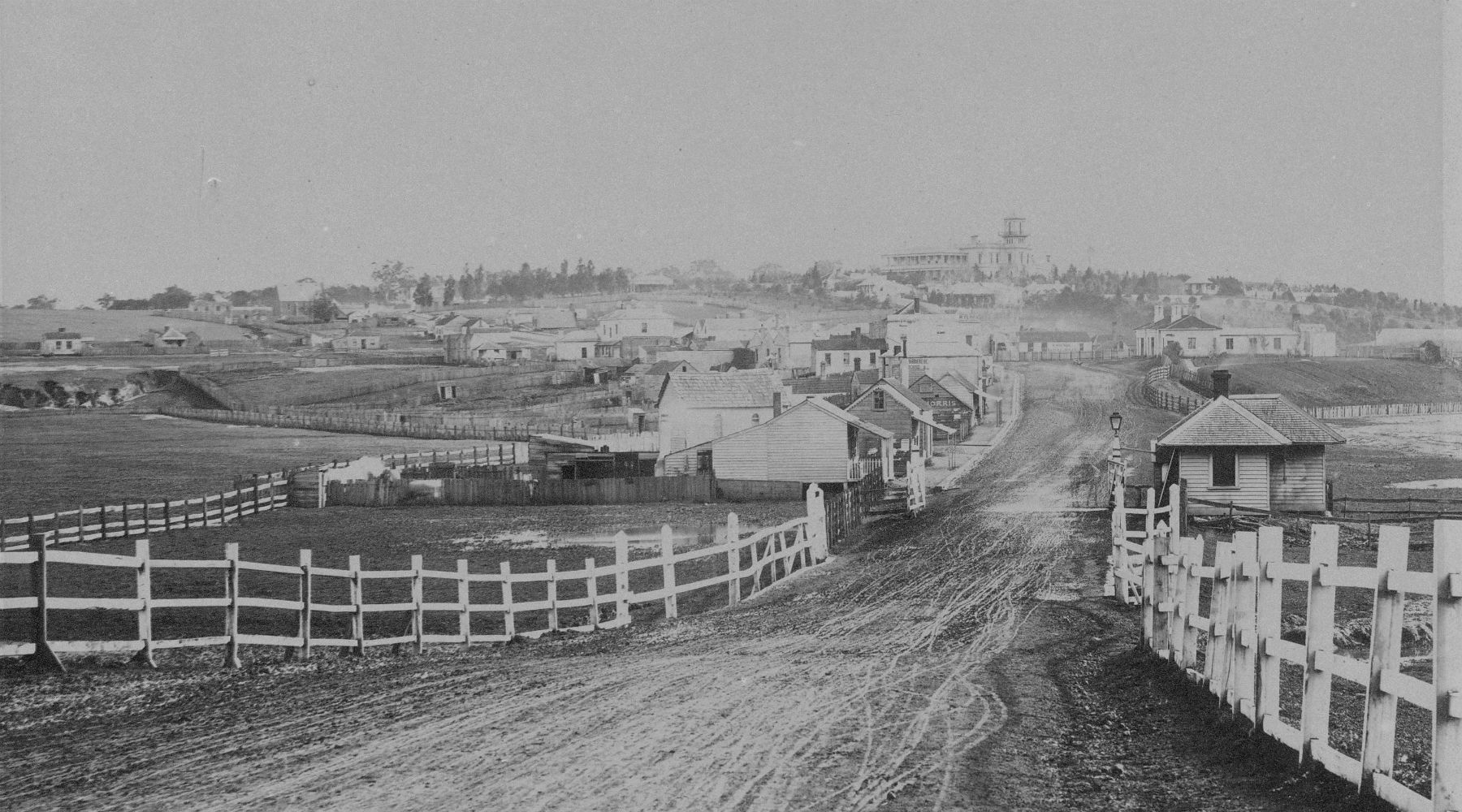
Flemington Village in 1866 with the Toll Gate house (right) and Flemington House (top).
Source: EHS Collection (01160)
Read Fine Homes to learn more about Flemington House.
Flemington Bridge
As the principal bridge over Moonee Ponds Creek, it was named the Mains Bridge and then Flemington Road Bridge and eventually Flemington Bridge. James Patrick Mains was a well known contractor. It became the gateway to Flemington Village and the district. In 1906, it became the interchange between the Essendon tram routes and the cable tramline to the City.
The railway station opened on 10 April 1885 as Flemington. It was renamed Flemington Bridge on 3 December 1885.
Flemington Racecourse
The first race meeting was held at Saltwater River Flat Racecourse in 1840 but the locality and race track was not called Flemington for some time. The Railway station opened on 28 February 1861.
Glenbervie
The general area was previously known as Hawstead. The new name was to honour the Napier Family which included Theodore Napier (1845 -1924). When the new railway station was built between Essendon and North Essendon (Strathmore), it was proposed that the station be named Napier, but this was disallowed because of the existence already of several places named Napier. The Railway Station opened 11 September 1922 and was finally named Glenbervie to honour the ancestral birthplace of Theodore’s father, grandfather, and great grandfather. The Napier family originated from Marykirk, a small village near Inverbervie.

Despite being born in Melbourne, Theodore Napier formed the Victorian Scottish Home Rule Association in 1891 and was often seen dressed in a kilt as he is here (c. 1906)
Source: EHS Collection (01282)
Hawstead
Hawstead was named after a village in Suffolk. Under instructions, Hawstead was named by surveyor, Eugene Bellairs in 1852 and was situated north of Brewster Street and south of Woodland Street. The Moonee Ponds Creek formed the eastern boundary. The actual township was laid out in the north east corner. It is now referred to as Glenbervie.
Keilor
James Watson (1811 -1869), Crown grantee and squatter, is thought to have named his home station after a farm called Keillor in Forfarshire, Scotland, one of four which his father, Hugh Watson, tenanted.
The licence for the Keilor Inn was issued in 1841. This hotel was located on the south side of the Old Calder Highway.
Kensington
Named after the district in central London. In November 1852, 78 allotments in the Village of Kensington were offered for sale. John Rankin claimed to be the first resident.
The Kensington Railway Station opened on 1 November 1860. William Samuel Cox established Kensington Park Racecourse in 1874 but relocated to Moonee Ponds in 1983 due to the lease not being renewed.
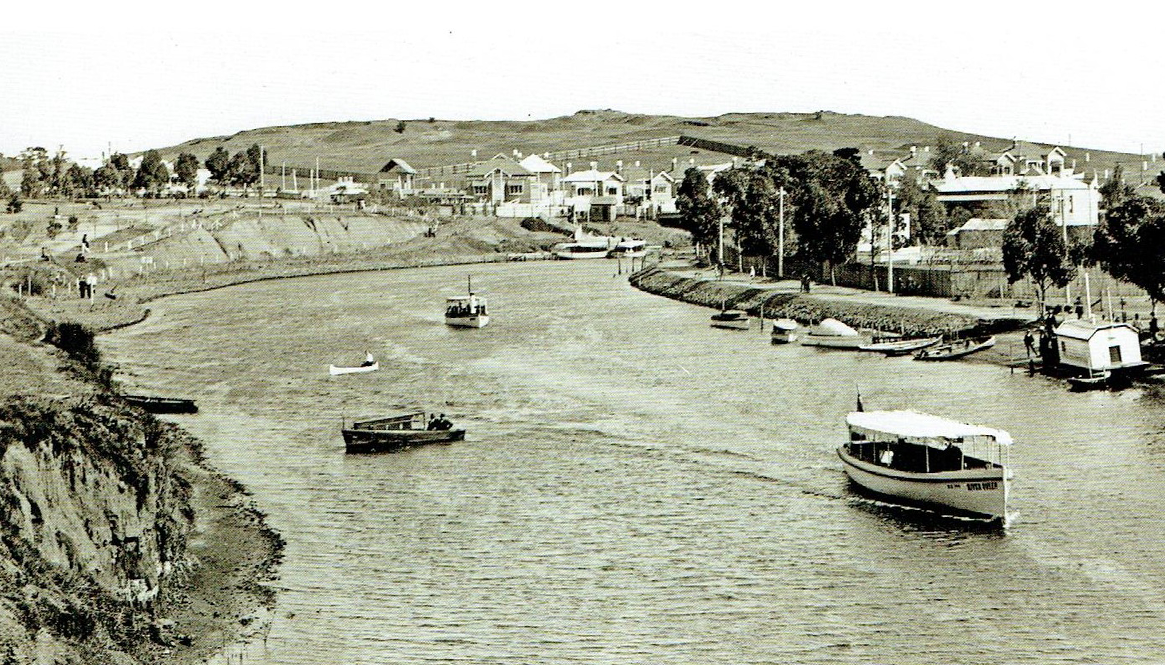
Maribyrnong
After representations from the Essendon River League, the Saltwater River was re-named the Maribyrnong River on 21 February 1913 by the Minister of Lands, Hon. H. McKenzie. The name was derived from the Wurundjeri language Mirring-gnay-bir-nong, roughly translated, means “I can hear a ring-tail possum”.
Maribyrnong was a well-established name prior to the river renaming. Joseph Raleigh owned the Maribyrnong Park Estate and there was a Maribyrnong racecourse both located across the river from Moonee Valley.
Moonee Ponds
The origin of the name is uncertain. The Moonee Moonee Chain of Ponds, now known as Moonee Ponds Creek, is a key water feature of the Parish of Doutta Galla. The area near the creek was known as Moonee Moonee Ponds or Moonee Ponds district and referred to land either side of the chain of ponds.
In 1837 Surveyor Robert Hoddle described the waterway as the Monee Monee Creek. One theory is that Moonee Moonee was a Wurundjeri willam man who died in service as a Native Police Corps member. There was a trooper of this name but also an older Moonee Moonee, a clan leader and probably his father who is more likely to be source of the creek’s name. In contemporary records he is referred to as Mooney Mooney. Other alternatives include Indigenous language (the male personal pronoun he, a flat place, a lizard) and a Crown grantee, John Mooney, who had land near the Moonee Valley racecourse. The description of the ponds as many flat places is more likely.
More info: Who was Moonee by Marilyn Kenny, Essendon Historical Journal, Autumn 2012.
The Moonee Ponds Railway Station opened on 1 November 1860.
Renaming Attempt
On 15 May 1879, a public meeting of the ratepayers of Moonee Ponds was held to change the locality’s name with Kaleno being proposed. The renaming was Gazetted on 6 June 1879. Following objections from the Council who were not consulted and from other residents, the Gazette of 29 September 1879, rescinded the name change.
Moonee Valley
William Samuel Cox (1831 – 1895) leased Feehan’s Farm in Moonee Ponds in 1883 to establish a racecourse which he called Moonee Valley. W S. Cox Junior died in 1912 and in 1913 the Moonee Valley Estate was advertised for sale, but the Great War intervened. In 1917 the Moonee Valley Racing Club was formed.
In 1871 the family had moved from Abbotsford to Kensington Park and in 1874 W. S. Cox established the Kensington Park Racecourse and he successfully operated the business for 14 years. However, Cox’s lease was due to expire in 1882 forcing Cox to find a new site on which to operate his racecourse.
Cox took up an offer from Richard Feehan to lease his Moonee Ponds estate and in 1883 established the Moonee Valley Race Track. The first meeting was held on 15 September 1883.
The new City of Moonee Valley was formed in 1994 with parts of Flemington, Kensington and Niddrie joining Essendon, with the addition of Airport West, Avondale Heights and East Keilor to make up the new local government area.
Newmarket
The ‘old market’ was in Elizabeth St Melbourne. On 30 Aug 1858 land was granted for the establishment of the Melbourne City Abattoir and for the establishment of the Newmarket Sale Yards. While the saleyards were officially opened in 1861, sales had been conducted there from late 1858. The saleyards closed in 1984. The Newmarket Hotel was opened in 1858 with William Joseph Passmore as the first licensee. Newmarket Railway station opened on 1 November 1860.
Niddrie
Henry Stevenson (1810–1893) called his property Niddrie after the suburb of Niddry in Edinburgh, Scotland. The name was later applied to the wider area on Keilor Road west of Essendon. His large residence Niddrie Homestead was built between 1869 and 1871. Today’s suburb of Niddrie is almost exclusively south of Keilor Road whereas the residence was to the north of Keilor Road.
Read Fine Homes to learn more about Niddrie.
Showgrounds
Part of the Bagotville Estate. The National Agricultural Society accepted a government offer of land to establish new showgrounds in Ascot Vale in 1882 and the first show occurred on 21 Dec 1883. The Railway station opened on 7 November 1883.
Strathmore
Originally known as part of North Essendon, one claim is that Strathmore was supposedly named by a Mr. Hewitt who had become the new owner of Magdala, Theodore Napier’s old home. The name is derived from the Scottish heritage of Thomas Napier (1802-1881), the Valley of Strathmore.
The Uplands Road Church, built on the original Rosebank Estate, North Essendon, was named Strathmore in 1938 in memory of Mr. Thomas Napier, the original landowner, and to honour the reigning Queen. Strathmore is a County in Scotland situated close to the County of Glenbervie, from whence the Napier Family originated, and where resides the Earl of Strathmore.
The North Essendon Railway Station was opened 28 Oct 1890 and was renamed Strathmore on 1 March 1955, following a request from a Deputation of Broadmeadows Councillors.
Temperance Township
Area on the west side of Union Road (bounded by Epsom Road, Maribyrnong Road and Union Road). In 1882 this was subdivided into 359 villa lots and advertised for sale as Temperance Township. The Temperance Movement was very strong in the 1880s. Based on previous Temperance Townships overseas and in NSW, a covenant was placed on each block forbidding the brewing of, storage or sale of alcoholic beverages. The streets were named after prominent members of the Temperance Movement or Total Abstinence Society. Developers retaliated by erecting hotels outside but at each apex of the township.
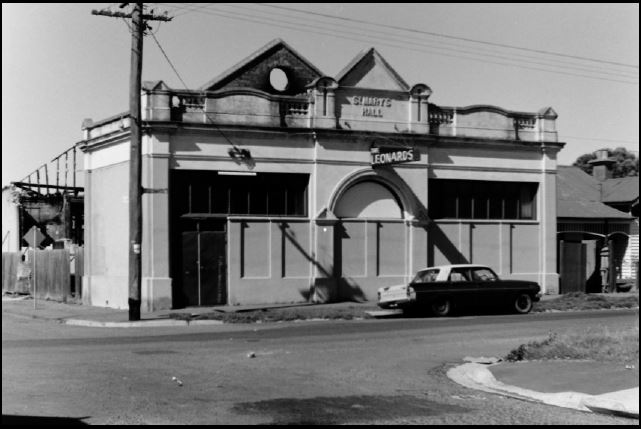
Temperance Hall was opened on April 29, 1891. The building was purchased by the St Mary’s Catholic Church in 1916 and then became known as St Mary’s Hall. Until it was destroyed by fire in February 1974, it was used as a church and school hall.
Travancore
In 1899 the Flemington House mansion and property was purchased by Henry Madden (1855 – 1928). He was engaged in supplying horses to the Indian Army. He renamed his residence Travancore after the former Indian Princely State of Travancore. When subdividing the estate in 1918 as the Travancore Estate, Madden named the streets after places in India. The Essendon Council approved the name for the residential district in 1925.
Read Fine Homes to learn more about Flemington House.
Whisky Hill
Whisky Hill, Ascot Vale includes land bounded by Epsom Road, Langs Road, Doncaster Street and the Maribyrnong River. There are several suggestions as to how Whisky Hill came to be named including whisky smugglers would sail along the Maribyrnong River; a still in Monash Street, Ascot Vale, and residents of Temperance Township would gather there on Sunday afternoons; land agents provided each successful purchaser of land in the Ascot Vale West area with a bottle of whisky; and the amount of liquor consumed at the land sale.
To learn more about the Street Names of Moonee Valley, see Bob Chalmers’ publication Street Names of Essendon, Moonee Ponds, Ascot Vale and Strathmore.
Sources
- Doutta Galla by Lenore Frost in the EHS Newsletter (No. 114, August 1992)
- Essendon by Bob Chalmers in the Essendon Historical Journal (Autumn 2010)
- Kaleno by Marilyn Kenny in the EHS Newsletter (No. 187, February 2007)
- Moonee by Marilyn Kenny in the Essendon Historical Journal, (Autumn 2012)
